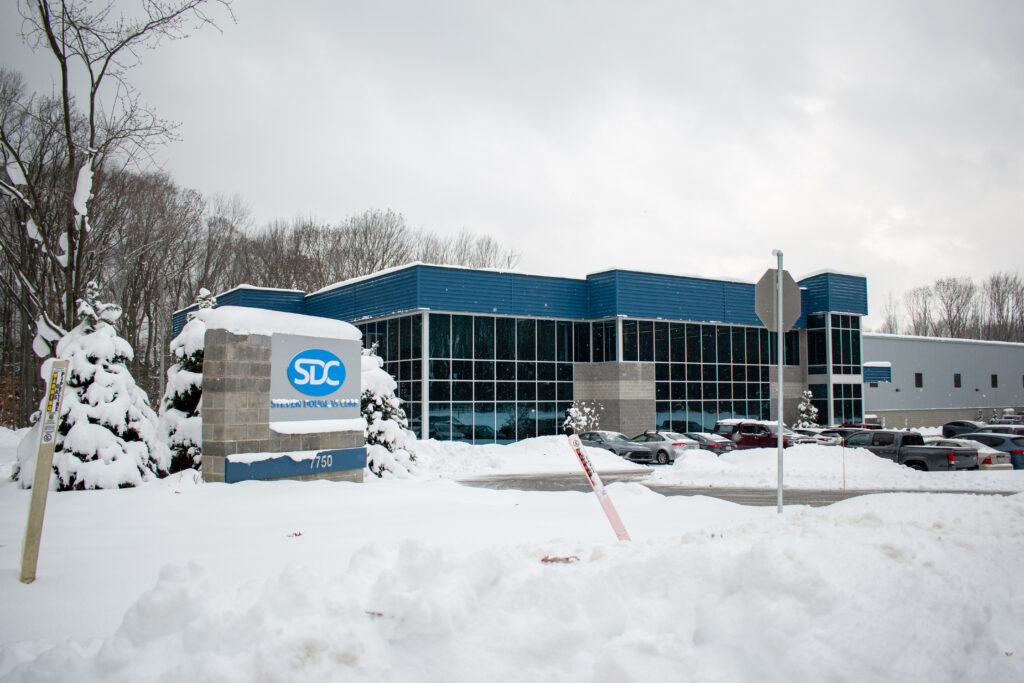The use of automation in manufacturing is hardly a recent trend. As the skills gap widens and automated systems become more precise, automation has certainly become more commonplace on factory floors. Due to the recent coronavirus (COVID-19) pandemic; however, several industry publications have suggested that the use of automation will become even more widespread within the manufacturing industry in the coming years.
As the largest and most capable engineering company in Northeast Ohio, the experts at Steven Douglas Corp. (SDC) agree that many manufacturers will soon be turning to automation as a way to combat many of the issues they’re experiencing today. Here are a few reasons why you might consider increasing automation as a result of COVID-19.
To Limit Human Interaction
With countless shelter-in-place orders and social distancing measures enacted around the world, manufacturers―essential and nonessential―are looking for ways to limit human contact within their processes. According to the New York Times, “Labor and robotics experts say social-distancing directives which are likely to continue in some form after the crisis subsides, could prompt more industries to accelerate their use of automation.”
Machines can help limit human interaction by automating processes and systems once handled by human operators. For example, the manual assembly of a product might have required multiple workers standing in close proximity to one another on an assembly line. However, by integrating automation technology, the product assembly may now only require one or zero workers with a fully-automated or semi-automated assembly machine.
To Keep Supply Chains Moving
Due to the increased demand for essential items and equipment, many parts suppliers across the manufacturing industry are struggling to manage and fill orders. According to a poll of visitors to various engineering websites, about half of the respondents’ businesses reported having supply chain problems as a result of COVID-19.
Automating part or all of the supply chain has many benefits for manufacturers, such as reducing manual effort while increasing productivity, efficiency, and accuracy. For example, automated packing machines can be used to efficiently and quickly group and pack products. Taken a step further, automated palletizing and stacking systems can quickly load and stack products on pallets for faster, more cost-effective shipping as suppliers rush to get parts to manufacturers.
To Boost Labor Productivity
While social distancing has emerged as one of the most effective strategies for slowing the spread of COVID-19, it’s also slowing productivity within the manufacturing industry. Companies have begun to stagger shifts and a growing number of people are self-quarantining. In some instances, production has even been brought to a standstill for nonessential businesses. With automation technology, however, robots can work around-the-clock, allowing manufacturers to meet high-pressure deadlines and standards, even with social distancing measures in place.
Data from the U.S. Bureau of Labor Statistics (BLS) shows that as companies continue to invest in automated machines and systems, productivity and output in manufacturing increases over time, while the number of hours worked rises at a slower pace. While workforces will likely be returning eventually, robots can provide the peace-of-mind manufacturers need to ensure production levels are consistently met at all times. For manufacturers of essential goods, robots can provide the boost in productivity needed to meet consumer demand as it increases.
To Increase Their Bottom Line
Increasing labor costs continue to weigh heavily on companies in virtually every industry, and manufacturing is no exception. According to BLS data, wages in manufacturing have increased steadily year-over-year, reaching an all-time high of $22.59 per hour in March 2020. As the coronavirus pandemic takes a toll on manufacturers, those that are financially struggling may look to cheaper labor alternatives, like automation, once the economy begins to pick back up.
According to the Brookings Institution, about 25 percent of U.S. jobs are projected to become automated during the coming decades, with many of these jobs being in manufacturing, transportation, warehousing, and food services. “Automation happens in bursts,” the researchers wrote, “concentrated especially in bad times such as in the wake of economic shocks, when humans become relatively more expensive as firms’ revenues rapidly decline. At these moments, employers shed less-skilled workers and replace them with technology and higher-skilled workers, which increases labor productivity as a recession tapers off.”
Experts in Intelligent Designs and Systems
It’s important for today’s manufacturers to not only consider the benefits of increased automation amid a global pandemic but also commit to solutions that will safeguard them in future crises. At SDC, we’re continually investing in our people, processes, and technology to bring our customers the brightest engineering solutions, enabling them to continually improve manufacturing operations, meet demand, and increase their bottom line. Contact SDC today to discuss your upcoming automation project. In the meantime, check out some of our past projects.

